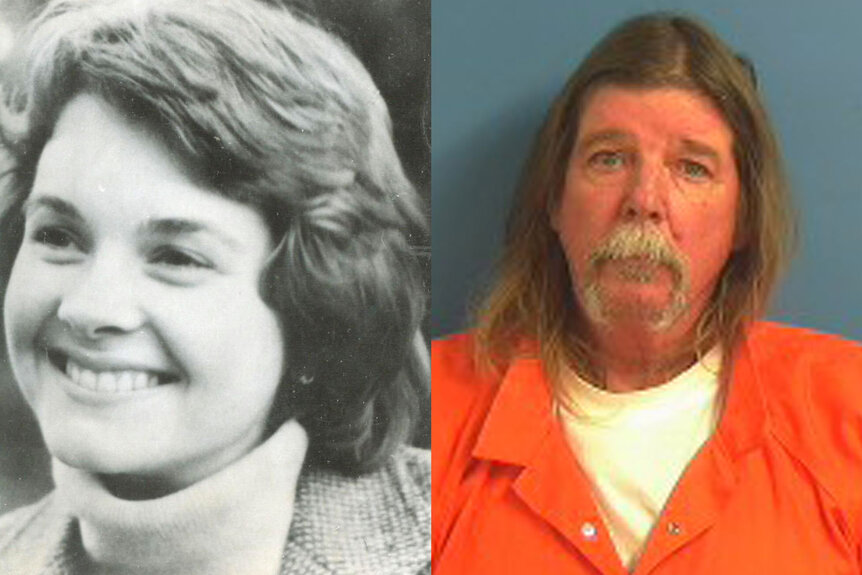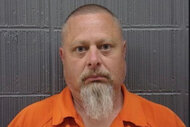Create a free profile to get unlimited access to exclusive videos, breaking news, sweepstakes, and more!
Cold Case Of Colorado Intern Murdered In 1980 Solved Thanks To Genealogy Sites, Police Say
Helene Pruszynski was abducted and killed in the summer of 1980, and nearly two decades later, authorities believe they have found justice for her.

Nearly 40 years after 21-year-old college student Helene Pruszynski was found dead in 1980, a suspect has finally been identified and arrested.
Prior to her death, Pruszynski, who went to college in Massachusetts, had traveled to Colorado to intern at local radio station KHOW-AM, Douglas County Sheriff Tony Spurlock said during a press conference Monday, December 16. She’d been in the area of Douglas County for only two weeks when she was abducted on her way home on January 16, 1980, and subsequently raped and murdered.
Her body was found abandoned in a field the following day; she was partially nude, and someone had tied her hands behind her back. She had been stabbed in the back nine times, according to court documents obtained by ABC News.
The initial investigation into Pruszynski’s murder went cold within a year, Spurlock said. In 1998, after working on the case periodically, authorities reopened the case and developed more leads, only for the case to go cold yet again. But things changed in 2013, with the creation of a cold case review team that focused on how DNA and new technology could be used to solve cases, according to Spurlock.
James Curtis Clanton, a 62-year-old man living in Union County, Florida, was arrested in relation to Pruszynski’s killing on Wednesday, December 11, Florida’s Union County Sheriff’s Office, who worked on the cold case alongside the Douglas County Sheriff’s Office, said Monday. He was booked into the Union County Jail before being extradited to Colorado on Friday, where he faces a slew of charges, the office said.
Clanton has been charged with kidnapping, first-degree murder after deliberation with intent, felony murder predicated on an underlying crime of robbery, felony murder predicated on an underlying crime of kidnapping, and felony murder predicated on an underlying crime of sexual assault, Douglas County District Attorney George Brauchler said during Monday’s press conference. He was not charged with sexual assault or robbery because the statute of limitations has run out.
He had not yet entered a plea, NBC News reports. It's unclear if he has retained a lawyer.
Clanton, who worked as a truck driver, was identified as a suspect thanks to forensic genealogy, CBS Boston reports. Male DNA that was recovered from the scene of Pruszynski’s killing was compared to DNA profiles available on websites like Ancestry.com; those whose DNA revealed that that they were distant relatives of the unidentified suspect allowed authorities to access their family trees, at which point authorities focused on Clanton as a possible suspect.
They began to observe him and were able to obtain a sample of his DNA lifted from a beer glass he drank from at a bar, according to an affidavit obtained by CBS Boston.
At the time of Pruszynski’s murder, Clanton was going by the name Curtis Allen White and was working as a landscaper, police said. He’d previously pleaded guilty to raping someone at knifepoint in 1975. He was released from prison and placed on parole in 1979, after serving four years behind bars, according to ABC News.
Officials on Monday credited “old school police work,” as well as software companies Parabon NanoLabs and United Data Connect, for a break in the case, the outlet reports.
“The other thing that I think the public ought to take away from this is that this is the true team effort,” Brauchler said. “There is no single person, there is no single piece of technology, no single fact that resulted in this day and everything that transpires afterwards. This was a concerted effort by people who were interested in getting justice on a case that had sat on a shelf because we didn’t have anything to do with it for the longest time.”
Authorities are also currently looking into whether or not Clanton was responsible for other sexual assaults in the area that occurred around the time of Pruszynski’s murder.
Spurlock said on Monday that he’d shared the news with Pruszynski’s sister, her only living relative, describing that exchange as a “bittersweet moment.” He also asked that Pruszynski’s memory be the focus — not her killer.
“This was a young girl who was just starting her life, came to Colorado to have an opportunity to make a difference,” Spurlock said. “She wanted to be in journalism. She wanted to be a part of a bigger story. She was involved in her choir at home and, from all accounts, from everyone that had anything to say about her, [she was] just a wonderful, decent, nice young lady.”
“It’s important that we talk about her as much as we can,” he continued. “Obviously we understand that the suspect that we have in custody is going to get some attention but the key is that we remember … and that we have Helene in our thoughts and prayers, and her family.”
The possible discovery of Pruszynski’s killer is one of numerous examples of cold cases that have been solved in recent years thanks to technological advancements and a growing use of forensic genealogy by law enforcement officials.
Brauchler said on Monday that the progress in Pruszynski’s case makes him optimistic for the future of similar investigations.
“Cases like this give me hope for the future," he said. "As we continue to make these technological advances, there are crimes yet unsolved today that I have great optimism because of cases like this that we’re going to end up solving. And I think the public ought to feel good about that, and I think murderers ought to be scared to death of it.”
























